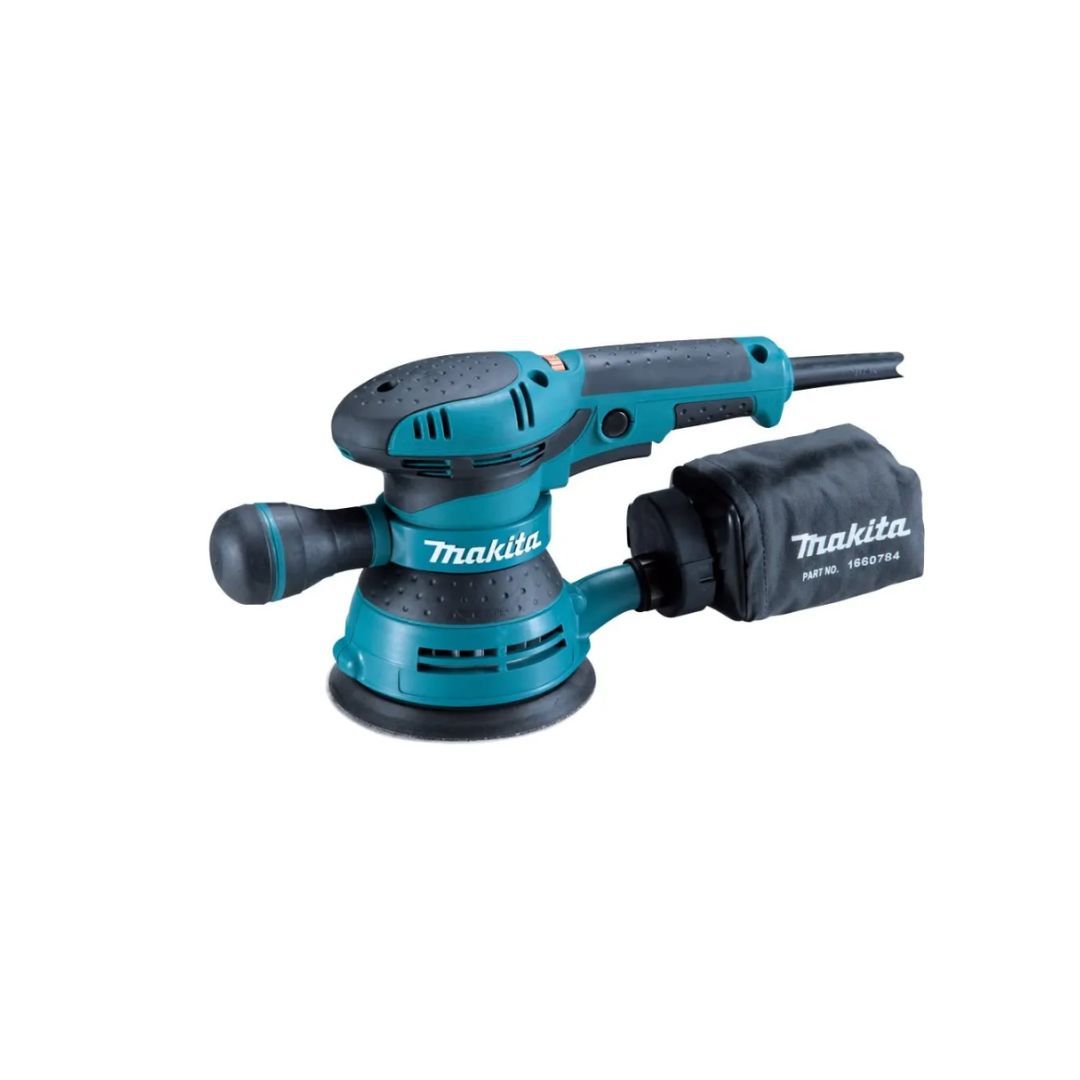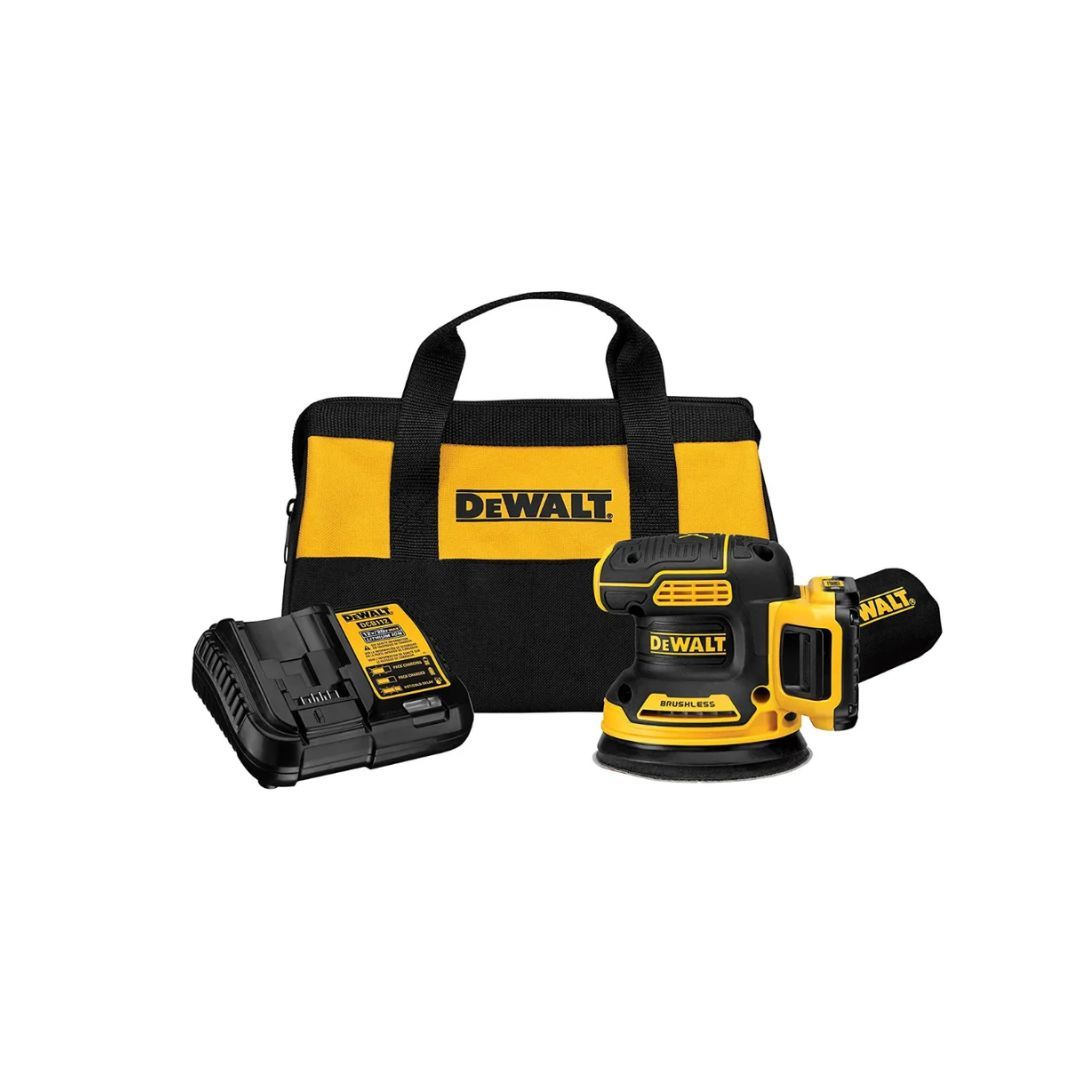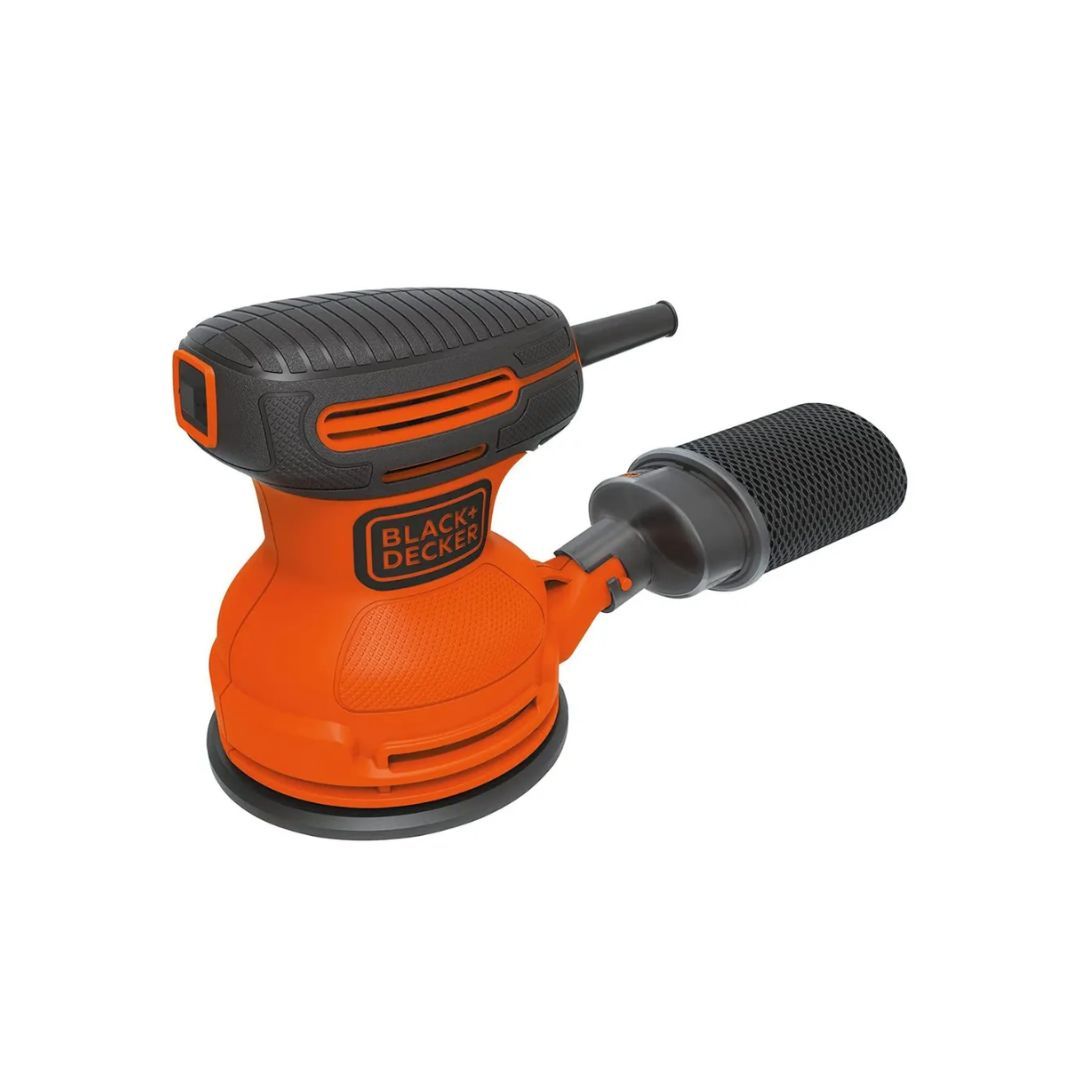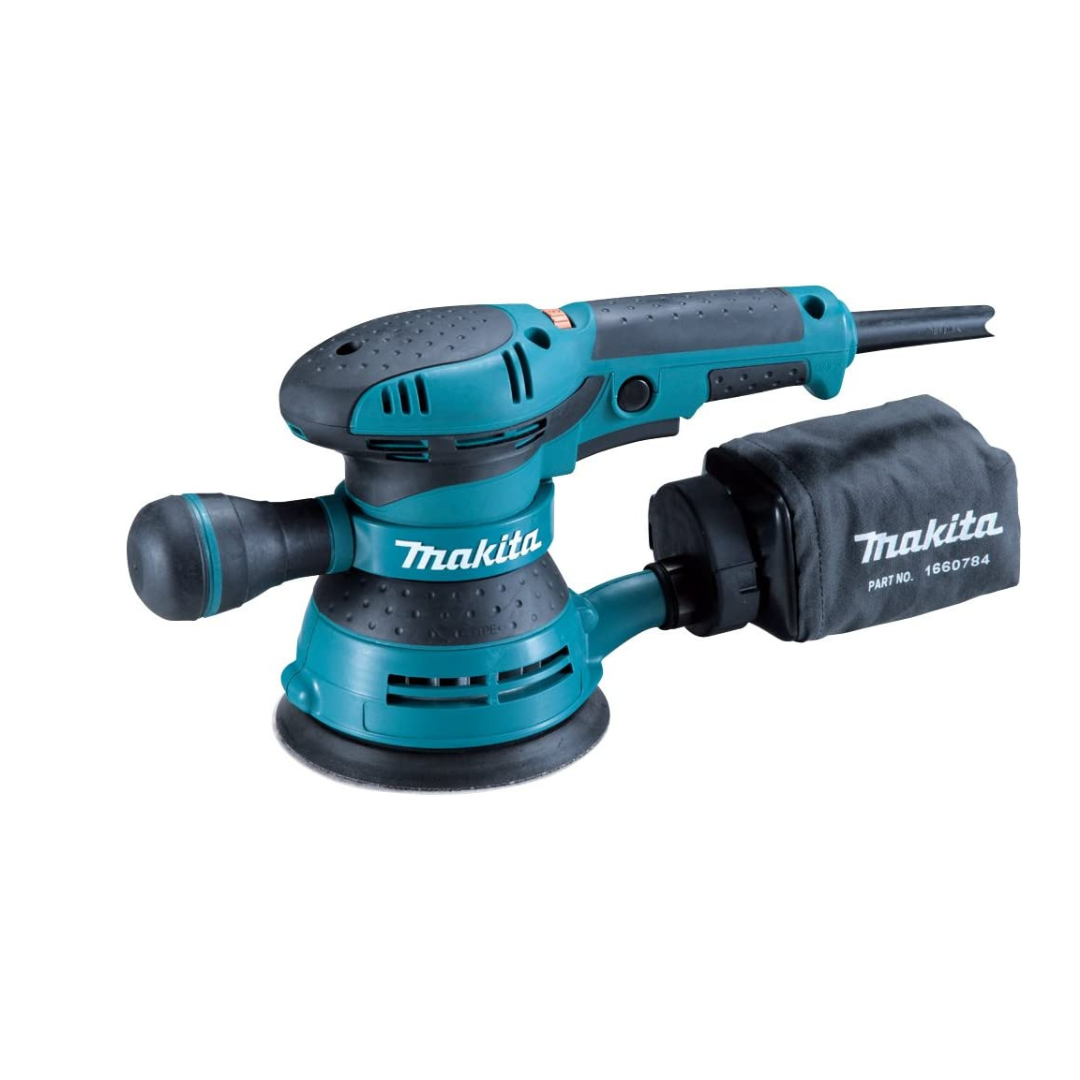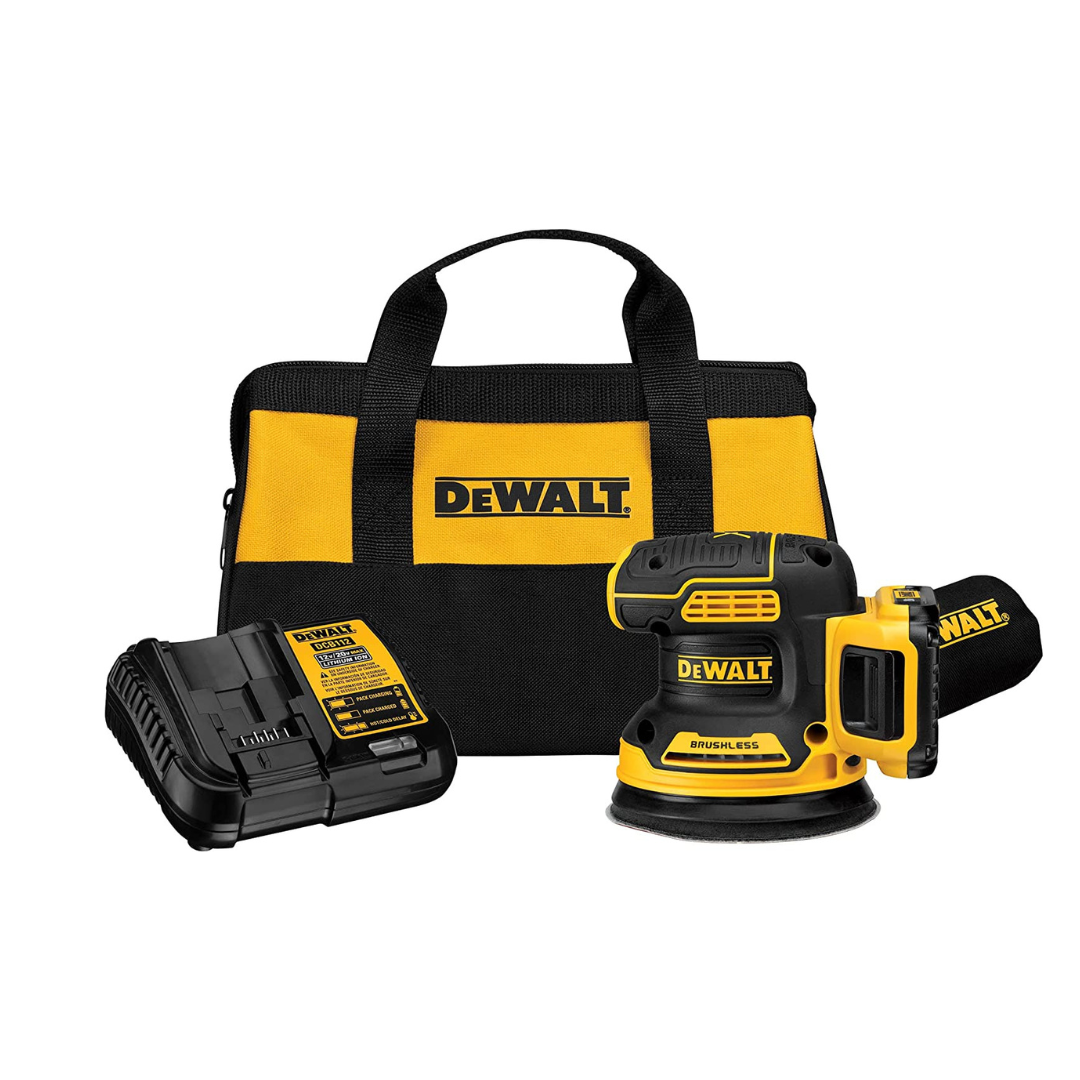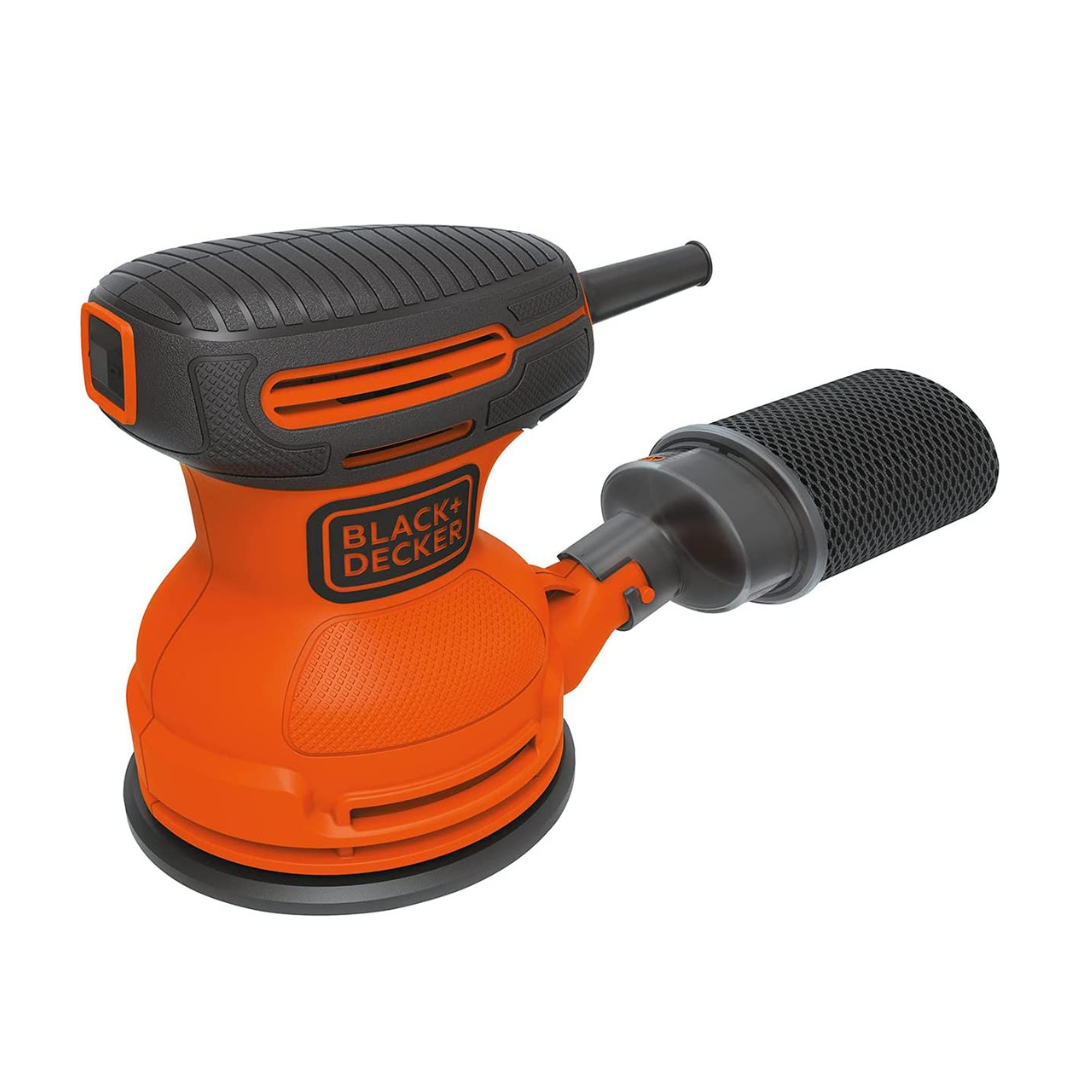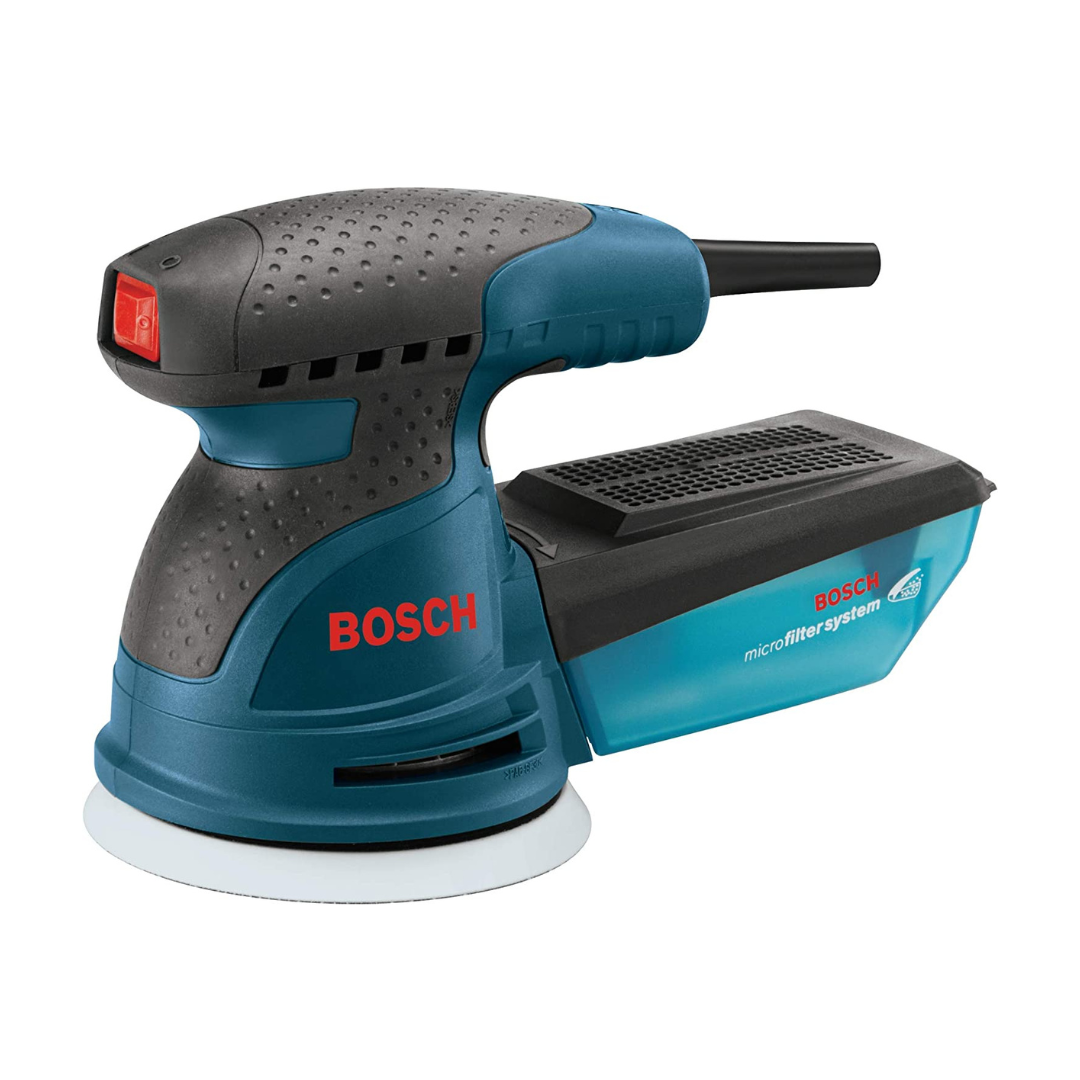We may be compensated if you purchase through links on our website. Our team is committed to delivering honest, objective, and independent reviews on home products and services.
Random orbital sanders come in many varieties, but ultimately all achieve the same task: making sanding easier for woodworkers by creating a smooth finish without concern for the direction of the grain.
In this review, we take a look at the best random orbital sanders, provide some tool-buying guidance, and discuss how to find the perfect sander for your next project.
Here are our top recommendations.
Top 5 Random Orbital Sanders
*Links open to product retail page.
- Best Overall: Makita BO5041 5″ Random Orbit Sander
- Best Cordless: DEWALT 20V MAX Random Orbit Sander
- Best for Small Jobs: BLACK+DECKER Random Orbit Sander
- Best Dust Collection: Bosch ROS20VSC Palm Sander
- Best High-Speed: SKIL 5″ Random Orbital Sander
Compare Top Random Orbital Sanders
| Product | Power | Variable Speed | Weight | Warranty |
|---|---|---|---|---|
| Makita BO5041 5″ Random Orbit Sander | 3.0 AMP | 4,000-12,000 OPM | 2.1 pounds | 1 year |
| DEWALT 20V MAX Random Orbit Sander | 2.0Ah battery | 8,000-12,000 OPM | 4.3 pounds | 3 years |
| BLACK+DECKER Random Orbit Sander | 2.0 AMP | 12,000 OPM | 3.2 pounds | 2 years |
| Bosch ROS20VSC Palm Sander | 2.5 AMP | 7,500-12,000 OPM | 3.5 pounds | 1 year |
| SKIL 5” Random Orbital Sander | 2.8 AMP | 7,000-13,000 OPM | 3.44 pounds | 1 year |
| Product | Power | Variable Speed | Weight | Warranty |
Best Overall
Pros and Cons
✔ Has 3.0 AMP motor
✔ Comes with variable speed control between 4,000 and 12,000 OPM
✔ Includes a built-in vacuum port adapter
✘ Doesn’t collect dust as well as some other similar devices
✘ Only comes with one abrasive pad
What Customers Are Saying
Customers who liked this product said that it was easy to hold, proved highly maneuverable, and that it was quiet. While many woodworkers found this tool to be well-designed, our team did find some who mentioned that the dust port was a bit too small and that it was difficult to attach to a shop vac.
Best Cordless
Pros and Cons
✔ Includes variable speed control between 8,000 and 12,000 OPM
✔ Has a low height that lets the sander get closer to the work surface
✔ Comes with a replaceable eight-hole hook
✘ Is heavier than some other random orbital sanders
✘ Battery position makes it somewhat awkward to use
What Customers Are Saying
According to our research, customers who were pleased with this product liked its portability, comfortable grip, and power for a cordless unit. While many appreciated the convenience of this tool, some people said that the battery didn’t last long enough for big projects and recommended getting a second battery unit or a larger battery.
Best for Small Jobs
Pros and Cons
✔ Has a comfortable grip handle
✔ Includes a built-in dust collection system
✔ Easily turns on/off with a lock-on paddle switch
✘ Does not have variable speed control
✘ Has a small dust canister
What Customers Are Saying
Our research showed that those who left positive reviews for this product said it was durable, easy to grip, and worked quickly. Though this is a great budget option if you only need an orbital sander for occasional use, some people wished that it had variable speeds, and others noted that its dust collection was not the best.
Best Low-Dust
Pros and Cons
✔ Comes with a soft -backing pad, sanding disc, and vacuum hose adapter
✔ Has variable speed control between 7,500 OPM and 12,000 OPM
✔ Features a pad-dampening system that reduces swirl marks
✘ Has a smaller engine which is not ideal for large projects
✘ Has a somewhat short cord
What Customers Are Saying
Customers who left satisfactory reviews liked that this product had low vibration, a wide range of speed control, and was easy to operate. While many were impressed with the dust collection capabilities, we found that some of them noted that it needed to be emptied fairly often and was difficult to disassemble.
Best High-Speed
Pros and Cons
✔ Comes with a dust collector that uses cyclone force to empty dust into a dust bag
✔ Has variable speed control
✔ Has a compact, ergonomic design that makes it easy to sand in tight spaces
✘ Is louder than some other similar products
✘ May not catch all of the dust on higher speed settings
What Customers Are Saying
We noticed that many customers who left positive reviews for this sander said it had excellent dust containment, high maneuverability, and was easy to change sandpaper grits. Although many liked the power and ease of use, they noted that it was often messy and that hooking it up to a shop vac was more effective than using the included dust bin.
Random Orbital Sander Buying Guide
When deciding which random orbital sander is best for your needs, we find it important to consider some of the following factors.
Disc Size
Most random orbital sanders use discs that are 5 or 6 inches in diameter, but some heavy-duty sanders may have discs up to 8 inches, and smaller devices may go as small as one inch.
For large projects such as sanding a hardwood floor, you’ll want to focus on devices with large disc sizes. On the other hand, small disc sizes can give you more flexibility and fit into tighter spots.
Power Source
There are pros and cons for both cordless and corded random orbital sanders. Cordless sanders are convenient because they can be brought anywhere, including outside. However, you are limited by the amount of battery life that a cordless sander has, and this may cause you to take unwanted breaks if you need to wait for it to charge.
Corded sanders need to be within operation of a power outlet or have a long extension cord to work where you need them. However, once they are plugged in, they will work for as long as you need without interruption.
Weight
Most random orbital sanders weigh between 2 and 4 pounds. Lighter devices create less wrist and hand fatigue but may be less powerful than heavier devices.
Random Orbital Sander Safety Tips
Random orbital sanders can be an incredibly useful tool for any serious DIYer. However, they should always be used with caution to ensure proper safety. Here are some tips our team recommends taking when using a random orbital or other type of sander.
Wear proper safety gear: When operating a random orbital sander, always wear safety goggles or glasses to protect your eyes from dust, wood particles, and debris. Additionally, use a dust mask or respirator to avoid inhaling harmful particles and wear long-sleeved clothing and work gloves for additional protection.
Secure your workpiece: Use clamps to firmly hold your workpiece when operating a sander. This prevents it from shifting or moving unexpectedly while sanding, reducing the risk of accidents.
Start with a clean work area: Before using the sander, clear the work area of any clutter or obstructions. Ensure no loose wires, tools, or other objects could interfere with your movement or become entangled in the sander.
Avoid applying excessive pressure: Let the sander do the work for you. Applying excessive pressure can lead to poor sanding results and increase the risk of the sander jumping or bouncing unexpectedly, potentially causing damage or injury.
Grip the sander properly at all times: Maintain a firm grip on the sander with both hands throughout the sanding process. This provides better control and stability, reducing the chances of the sander slipping or causing accidents.
Disconnect the power source when not in use: When taking breaks, changing sandpaper, or when you’ve finished your project, always unplug the sander and any other power tool from the power source. This prevents accidental activation and reduces the risk of injury when handling or adjusting the tool.
Random Orbital Sander FAQs
What are random orbital sanders used for?
To properly choose and use a random orbital sander, you first need to know exactly what it is designed for. Random orbital sanders are versatile and can work to sand and smooth items due to their unique shape. The disc in a random orbital sander spins in a circle while the pad moves in an oval loop, resulting in a swirl-free finish no matter if you’re sanding with or against the grain.
What’s the difference between a traditional and a random orbital sander?
The main difference between standard and random orbital sanders is the shape of their pad. Traditional orbital sanders have a square sanding pad that moves in an orbital manner, while a random orbital sander has a circular pad and moves in an elliptical manner.
What are the differences between an orbital sander and a palm sander?
Palm sanders traditionally have a different shape, size, and motion than random orbital sanders. Random orbital sanders are best for sanding large surfaces and smooth larger pieces of wood. Palm sanders, on the other hand, are best for sanding small pieces and are also effective at sanding edges.
Our Methodology
To provide our readers with the best recommendations possible, we rely on several key sources of information to help guide our selection process.
Initial Research: Our research process began by generating a list of sanders with a significant number of verified-buyer reviews and an average customer review rating of 4–5 stars. We looked at positive and negative reviews alike, focusing on information from both satisfied and critical buyers.
Expert Insights: Through our years of experience, we’ve learned that listening to what others have to say is key to building accurate, well-rounded articles. To complement our in-house expertise, our team looked at reviews and videos from trusted publications and independent testers, spoke with subject matter experts, and drew insights from reader contributions.
Final Product Selection: We then began fine-tuning our list by replacing older models with the latest versions and eliminating any discontinued models. From there, we pared the list down further by comparing each model’s feature set and selecting the best-in-class options for a variety of buyers, budgets, and scenarios.
Why You Can Trust Us
This Old House has empowered homeowners and DIYers for more than four decades with top-notch home improvement advice in the form of television programs, print media, and digital content.
Our team focuses on creating in-depth product and service review content. To date, we’ve published numerous tool reviews, from cordless drills and impact drivers to tape measures and laser levels.
Once we conclude our research, we craft a comprehensive, user-friendly article of recommended products and additional information to help our readers make the right purchase.
Questions or Comments?
To share feedback or ask a question about this article, send a note to our team at reviews@thisoldhousereviews.com.
